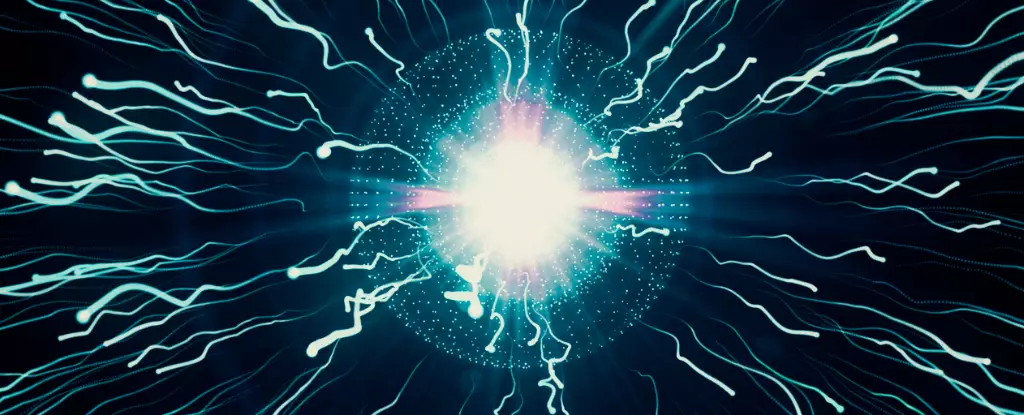For over a decade, scientists have embarked on an ambitious journey to understand fundamental aspects of nuclear physics, focusing particularly on the enigmatic behavior of subatomic particles known as neutrons. Recent developments from the Central Neutron Detector at the Thomas Jefferson National Accelerator Facility (TJNAF) have provided unprecedented insights into the swirling dynamics of neutrons, setting the stage for a deeper understanding of the most basic building blocks of matter. As researcher Silvia Niccolai from the French National Centre for Scientific Research suggests, these findings hold significant importance for the ongoing study of nucleons and their inner workings.
Understanding neutrons requires a dive into the particle-rich world of the atomic nucleus, which is fundamentally a chaotic assemblage of quarks and gluons. Neutrons and protons are primarily made of different combinations of quarks, where two ‘up’ quarks combine with one ‘down’ quark to form a proton, and conversely, two ‘down’ quarks with one ‘up’ quark result in a neutron. This process may appear orderly when depicted as simple triplets; however, the underlying reality is fraught with turbulence, where particles are entangled in a dizzying dance influenced by the forces of quantum mechanics.
Particularly, gluons act as mediators of the strong force, binding quarks into their respective configurations while simultaneously engaging in a relentless struggle with virtual particles that emerge and vanish in quantum fluctuations. Understanding this dynamic is less an exercise in orderly categorization and more an exploration of an unpredictable microcosm.
To investigate neutron behavior, physicists have long employed high-energy particle collision methods, shooting electrons at nuclear particles and assessing the resulting reactions. Through these experimental techniques, they delve into the quark-gluon interactions, often using the term “partons” to refer to these fundamental constituents within distinct quantum frameworks. While the protons’ parton behavior has been partially deciphered over the past few decades—for example, addressing long-standing puzzles about the relationships between mass and size—the study of neutrons presents unique challenges.
A key difficulty highlighted by Niccolai is neutron detection, especially due to their elusive nature; traditional detection setups were limited in their ability to capture the angles at which neutrons eject electrons. Responding to this hurdle, the TJNAF initiated the construction of an advanced detector in 2011. After being completed in 2017, the new setup underwent preliminary testing, during which unexpected complications caused experimental contamination from stray protons.
The experimental process was not without its trials, particularly as researchers dealt with the consequences of unwanted proton detections. However, after considerable refinement and the introduction of machine-learning algorithms designed to filter the data, the research team began to witness promising results. The subsequent studies have brought about new revelations on the generalized parton distribution (GPD) E of neutrons, a metric essential for understanding spin dynamics within nucleons.
Spin, in quantum mechanics, relates to a particle’s intrinsic angular momentum, a quantity crucial for deciphering the overall spin structure of protons and neutrons. Historical analyses reveal that quarks only account for a fraction—about 30%—of the total nucleon spin, sparking an ongoing debate known as the “spin crisis.” The remaining percentages, tied to complex interactions, may be explained by gluon dynamics or other less understood aspects of quantum behavior.
The implications of these findings extend beyond mere academic curiosity; they could illuminate fundamental processes governing nuclear physics and lead to advancements in our understanding of the universe’s structure. As researchers continue to compare neutron data with that of protons, they are poised to uncover more profound truths about the mechanics of matter at its most fundamental level.
The advancement in detection technology, combined with novel analytic approaches, not only enhances our comprehension of neutrons but also sets the groundwork for future explorations that could demystify the tantalizing puzzles of quantum mechanics. The journey into the heart of matter continues, and with each revelation, we draw nearer to grasping the intricacies of the universe on its most microscopic scale.

Leave a Reply